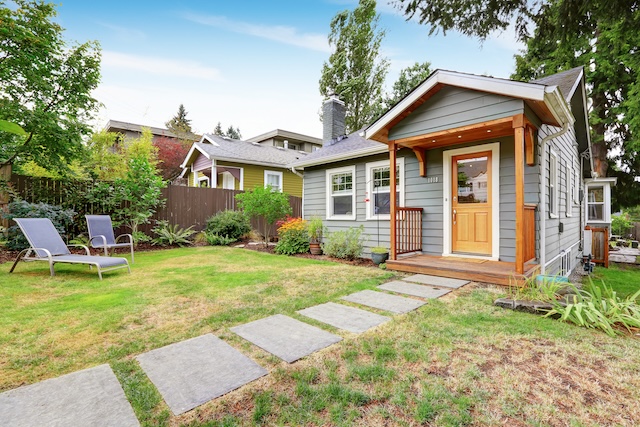Bend ADU approvals could rise under new rules
Published 5:45 am Friday, May 2, 2025

- 123rf
Two small housing units per lot could be allowed
Accessory dwelling units — or ADUs — have become a popular option for Bend homeowners to provide housing for friends and family or generate rental income to help pay off their own homes. The city of Bend may soon allow property owners to place two of these small secondary units on their properties instead of just one.
The new rule, should it be adopted by the Bend City Council, would be another step in nearly 10 years of loosening restrictions on ADUs, which the city views as a key tool to work against the housing shortage.
ADUs are small, independent housing units that can either be attached or detached from a primary home. They are sometimes called “mother-in-law” units because of their potential to provide housing for family members.
In the city of Bend, code prohibits accessory units from being larger than 800 square feet. Should the city allow two ADUs per property, the second unit would not be allowed to exceed 500 square feet.
As recommended by the city’s planning commission on Monday, the new rules would allow each unit to either be attached to or detached from the primary home.
Homeowners adding an ADU would have to stay within the city’s maximum building coverage areas for residential lots, which vary between 30% and 60% depending on the zone.
And if the ADU exceeds the maximum housing density for a given zone, the additional unit would only be allowed if property owners can prove through an analysis that the sewer system can handle the extra home.
Because ADUs are not large-scale developments requiring huge investments, they are relatively resistant to changing market conditions, such as interest rates, said Rachael Baker, affordable housing manager with the city. Market conditions have held up dense mixed-use developments in the city’s core.
“In the long run, they really provide more housing units to the city of Bend, which is what we need,” Baker said.
Bend needs to produce more than 30,000 housing units in the next 20 years to meet the needs of the growing city, according to the Oregon Department of Housing and Community Services.
Recommendations to allow two ADUs per property were the result of a 2023 workshop of developers, employers, small lot property owners, city staff and others.
Loosening restrictions
Since 2001, Bend has approved permits for 954 accessory units across the city. More than 750 of those were approved within the past 10 years.
The surge in ADU applications spiked in 2016, when the city dropped the requirement for a conditional use permit for the dwellings. A few years later, the city got rid of parking and sidewalk requirements for ADUs, waived development charges for water and sewer and increased maximum size to 800 square feet. Before the 2016 changes, the city had never approved more than 40 ADUs in a year, but approved at least 70 per year for the next seven years.
Deschutes County began allowing ADUs on rural residential lands outside the city of Bend in 2023.
Bend has seen a slight drop in ADU permitting in the past several years. One possible explanation could be that people are finding other ways to add housing units to properties that already have houses on them, said Pauline Hardie, a city of Bend planner who handles development code changes.
Oregon’s HB 2001 opened the door for “middle housing” — which includes duplexes, triplexes and quadplexes — in areas traditionally zoned for single family homes. Through follow-up legislation, the state has expedited the process for property owners to divide smaller residential lots and sell each unit within the middle housing separately.
Despite that incentive, building middle housing can come at the cost of system development charges and infrastructure upgrades, like sidewalks — a requirement for some triplex developments.
That’s not the case for ADUs.
“I think that there is potential to encourage more development of ADUs, because (there are) less requirements,” Hardie said.
The city doesn’t have an estimate of how many more ADUs the loosened restrictions might add to Bend, or where exactly the new dwellings might have a tendency to pop up, Hardie said.
Roberta Silverman, land use chair of the Southern Crossing Neighborhood Association, said she doesn’t see a problem with allowing people to have two ADUs on a property, as long as additional units aren’t on a path to becoming short-term rentals, the density of which is a concern of many residents.
If a property owner has two ADUs, city rules prohibit more than one of the three units on the property from being used as a short-term rental, and that unit is only eligible if it is at least 500 feet away from another short-term rental, according to Hardie.









